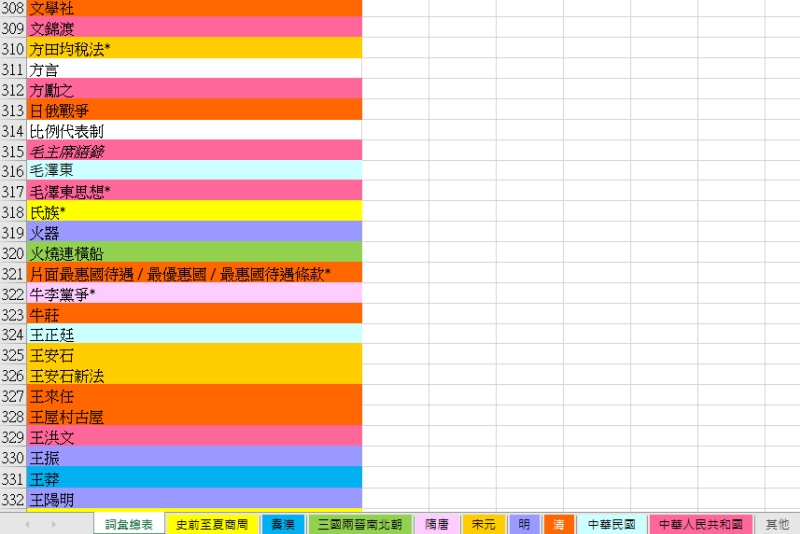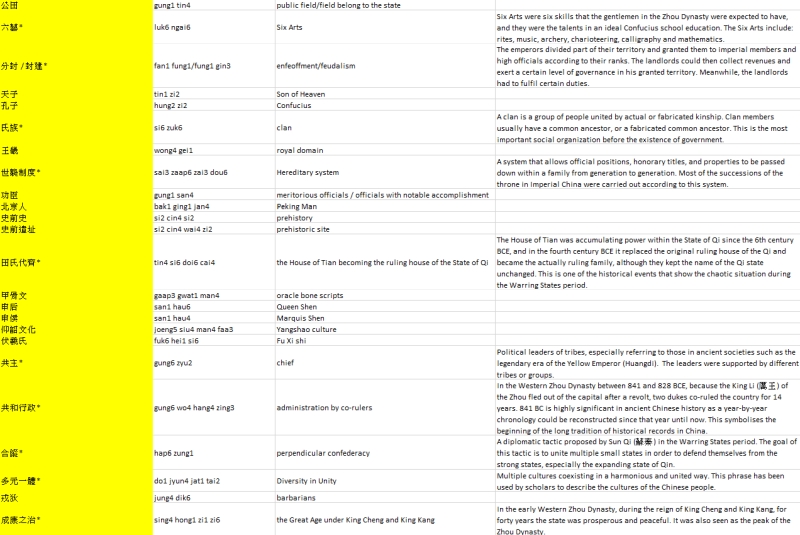Chinese History is one of the compulsory subjects for junior secondary students in Hong Kong, yet the learning of the subject may be difficult for non-Chinese Speaking (NCS) students due to language barriers. Teachers, too, may experience challenges in translating the terms, let alone providing understandable explanations to students with limited Chinese History and cultural background.
CityU’s Department of Chinese and History (CAH) was invited by the Hong Kong Education Bureau (EDB) to produce a glossary of key terms for Chinese history to support Chinese history teaching at the junior secondary level. The glossary in Excel format, which encompasses over 2,430 terms about Chinese history, including incidents, figures, systems, places, philosophical believes, and more, is recently made available for secondary school teachers and students to download on EDB’s website. It was compiled by Dr TSUI Lik-hang, Dr LI Yiwen, Professor HON Tze-ki, and Mr Calvin HT WONG from CAH, based on the topics on EDB’s “Chinese History Curriculum Guide (Secondary 1-3) (2019)”.
The terms are sorted in the order of nine historical periods throughout Chinese history and entered in separate sheets with different tab colours. An index of all terms is provided, so users can look up the period from which a particular term was originated, before finding out the translation in the corresponding sheet.
Some terms come with English explanations. For instance, the term 六藝 (Cantonese Romanisation: luk6 ngai6) is literally translated as “Six Arts”, and the explanations would inform the users that it means the six skills that the gentlemen in the Zhou Dynasty were expected to have, including rites, music, archery, charioteering, calligraphy and mathematics.
Another example is the term 科舉制 (Cantonese Romanisation: fo1 geoi2 zai3), which is translated as “civil-service examination system” in the glossary. Though it may be familiar to Chinese speakers and the translation implies that it was a system for selecting officials, the explanation in the glossary can give NCS students further information that it was established during the Sui-Tang periods and was inherited by the following dynasties until it was abolished in the late-Qing period in 1905.
Click here to download the glossary and the user guide, and take advantage of this valuable resource to facilitate Chinese History learning and teaching.
 Photo 1: The terms in the index are placed in coloured cells representing the periods in history from which the terms originated. Users can look for the translation of a particular term in the sheet with the same colour tab.
Photo 1: The terms in the index are placed in coloured cells representing the periods in history from which the terms originated. Users can look for the translation of a particular term in the sheet with the same colour tab.
 Photo 2: Some of the terms, particularly those related to historical events and systems in Chinese history, come with easy-to-understand explanations (the fourth column in the image).
Photo 2: Some of the terms, particularly those related to historical events and systems in Chinese history, come with easy-to-understand explanations (the fourth column in the image).
